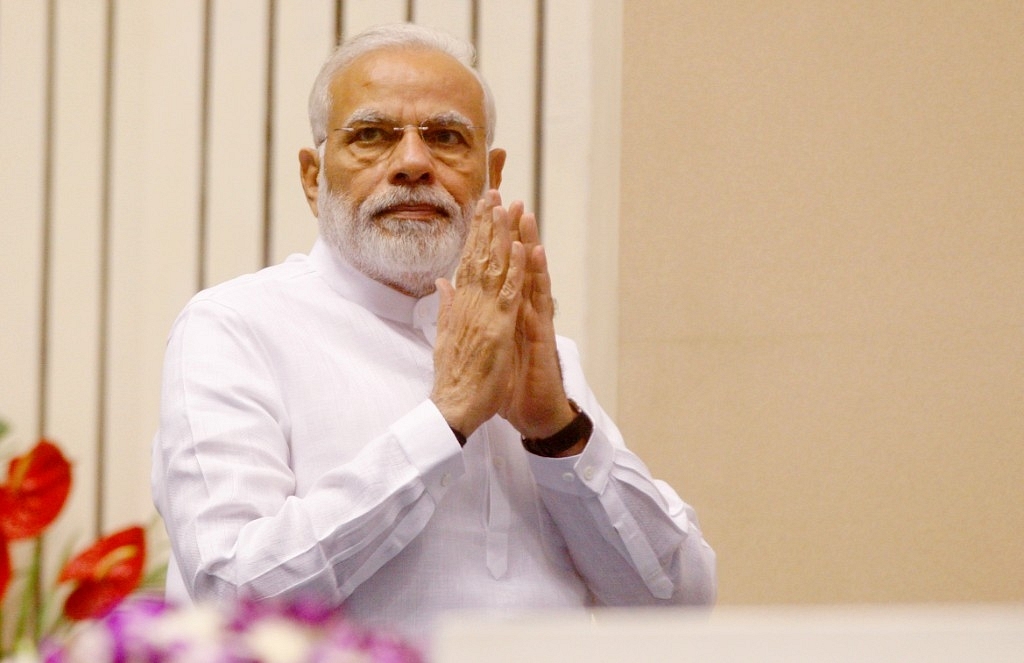Economics
Budget 2023: No Excuses, No Appeasement; Modi Goes Big On Growth With 33 Per Cent Increase In Capex
- Any other government in Delhi would have preferred to take refuge under the global uncertainty to go slow and launch some populist schemes in an election year.
- Modi did just the opposite.

Prime Minister Narendra Modi (Qamar Sibtain/India Today Group/Getty Images)
The Narendra Modi government is distinct in its assertiveness when compared to any of its predecessors in the last three decades. Even the P V Narasimha Rao government slowed down after the first three years in office. But Modi’s hasn’t.
Over the last nine years, he didn’t allow anyone to set the agenda. It was always Modi in the driving seat. The government kept setting goals and left the Opposition and critics in perennial uncertainty.
Any other government in Delhi would have preferred to take refuge under the global uncertainty to go slow and launch some populist schemes in an election year. Modi did just the opposite.
On Tuesday, the Economic Survey proudly claimed that the economic recovery is “complete.” The budget took the lead and fast-forwarded the growth agenda by proposing a 33 per cent hike in capital expenditure outlay in the fiscal year 2023-24 (FY24).
Capital expenditure
Capital expenditure by the government proved the growth engine over the last three difficult years. The outlay increased by over 120 percent between FY20 and FY23. More importantly, the spending often surpassed the initial outlay.
Traditionally, the governments fell short in execution, leaving a wide gap between outlay and expenditure. Often this route was misused for the sake of fiscal management.
To its credit, the Modi government spent the money they allocated in budgets. This helped the economy to survive most of the negative impacts of the worldwide crisis on capital formation, private capital expenditure and job creation.
True, at seven per cent, the country's unemployment rate is a tad higher than normal. But things could have been worse, had the government not stepped up on infrastructure project implementation.
Yet, they achieved the dual goal of higher tax collection and keeping fiscal deficit within the targeted range of 6.4 percent in FY23. For FY24, the fiscal deficit target is further reduced to 5.9 percent. This deserves serious appreciation.
It is indeed heartening that except for the tweak in the income tax, by making the optional offers of 2022 into a default, the budget is bereft of any surprises. There was no effort to please any section of the population or industry. The tweak was also not unexpected.
While the true impact of the new tax regime would take time to unfold, here too, the government was focused on optimising the growth agenda. The tax buoyancy, particularly GST (Goods and Services Tax) collections, gave it the wherewithal to take a bet.
As per initial estimates, the switch to the new tax regime would cost Rs 35,000 crore in revenue opportunity to the government. However, this is an extremely conservative estimate and rests on the assumption that the tax base will remain the same.
Rest assured the government would look forward to using the easy tax regime as a tool to bring more people under the tent. Widening the direct tax net is an agenda of the Modi government and they are not afraid to apply the stick if needed.
More importantly, the notional revenue loss if any will be compensated in the long run by higher spending, improved sentiment for the private sector to expand capacities, more jobs and, higher GST collection.
Urban infrastructure
To put it into perspective, as indicated by the Chief Economic Advisor Venkatramanan Anantha Nageswaran on Tuesday, the government is expecting a revival of private sector capital expenditure to spur growth and job creation in 2024.
However, to avoid risks and mitigate all infrastructure gaps (which held back the growth of manufacturing in the past) as part of India’s $1.3 trillion National Infrastructure Pipeline, the government is focusing on another hectic year of infrastructure building.
Apart from highways, expressways, rail, airports, rural infrastructure, low-cost housing (PM Awas Yojna) etc, the finance minister Nirmala Sitharaman has touched upon the crucial areas of fast and last-mile connectivity and sustainable urban infrastructure.
Urban India is the biggest consumer of goods and services. However, most cities and towns in India are not designed to handle exponential growth. This is already proving a serious hurdle to improving overall logistics efficiency.
The crawling traffic of Bengaluru and the time lost in entry and exit of cargo from any major city, are classic examples of this infrastructure inadequacy. Finding a solution is, therefore, essential to make the most of the upcoming growth cycle.
While the Gati Shakti project is already in on easing cargo traffic, the finance minister proposed the creation of an Urban Infrastructure Development Fund (UIDF) and reviving the long pending issue of municipal bonds to help urban bodies access finance.
A municipal bond although is a sticky issue in the prevailing environment of ‘Revdi politics’ as it would require urban bodies to introduce user charges on infrastructure and services, beyond the scope of property tax, to be creditworthy.
Introducing ElectionsHQ + 50 Ground Reports Project
The 2024 elections might seem easy to guess, but there are some important questions that shouldn't be missed.
Do freebies still sway voters? Do people prioritise infrastructure when voting? How will Punjab vote?
The answers to these questions provide great insights into where we, as a country, are headed in the years to come.
Swarajya is starting a project with an aim to do 50 solid ground stories and a smart commentary service on WhatsApp, a one-of-a-kind. We'd love your support during this election season.
Click below to contribute.
Latest